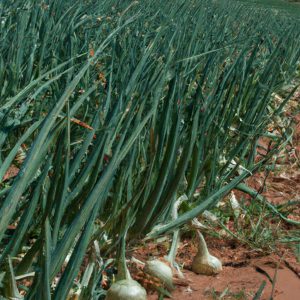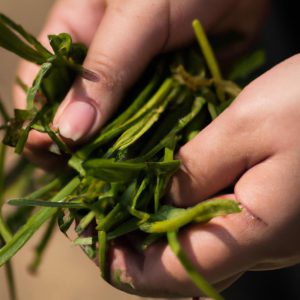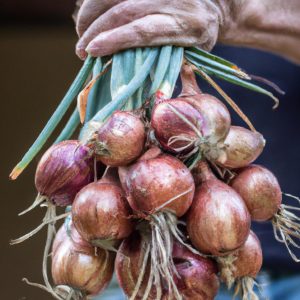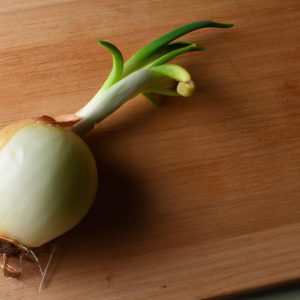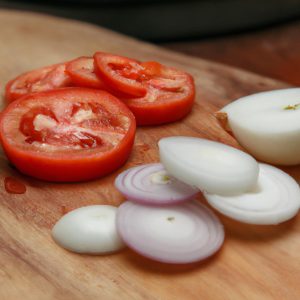Have you ever found yourself in the middle of preparing a recipe that calls for fresh onions, only to realize that you have none in your pantry? Or maybe you’ve wondered how much dry minced onion you should use as a substitute for a fresh onion. Measuring the right amount of onion is essential to ensure your dish tastes just right. In this article, we’ll explore the topic of how much dry minced onion equals one onion and provide you with some useful tips to help you measure accurately.
Throughout this article, we’ll discuss the differences between dry minced onion and fresh onion, the benefits of using each in your cooking, and how to convert between the two. We’ll also provide you with some tips on how to use both types of onion and some alternative ingredients to consider. By the end of this article, you’ll be a pro at measuring onion and have the confidence to substitute dry minced onion for fresh onion in your recipes.
Understanding Dry Minced Onion

Definition of Dry Minced Onion
Dry minced onion is a dehydrated form of onion that has been chopped into small pieces. It is commonly used in cooking as a seasoning or spice. It has a strong flavor and aroma that adds depth to dishes. Dry minced onion is a convenient ingredient to have on hand as it has a long shelf life and is easy to store.
Benefits of Using Dry Minced Onion
One of the main benefits of using dry minced onion is its convenience. Unlike fresh onion, which requires peeling and chopping, dry minced onion is ready to use straight from the container. It is also a cost-effective alternative to fresh onion as it has a longer shelf life and can be bought in bulk.
Another benefit of using dry minced onion is that it has a more concentrated flavor than fresh onion. This means that you can use less of it in a recipe to achieve the same level of flavor. It is also a great way to add onion flavor to dishes without adding the texture of chopped onion.
Different Forms of Dry Minced Onion
Dry minced onion is available in different forms, including flakes, granules, and powder. Onion flakes are larger pieces of dehydrated onion that can be rehydrated in liquid. Onion granules are smaller than flakes and have a finer texture. Onion powder is the most finely ground form of dry minced onion and is often used as a seasoning. Each form has its own unique texture and flavor, and the choice of which to use depends on personal preference and the recipe being prepared.
Understanding Fresh Onion

Definition of Fresh Onion
Fresh onion is a vegetable commonly used in cooking that belongs to the Allium family. It has a distinctive flavor and aroma and is a staple ingredient in many recipes. Fresh onions come in different colors, including white, yellow, and red.
Benefits of Using Fresh Onion
Fresh onions offer numerous health benefits, including being a good source of Vitamin C, fiber, and antioxidants. They have anti-inflammatory properties and may help reduce the risk of certain chronic diseases, such as heart disease and cancer.
In terms of cooking, fresh onions add flavor and texture to recipes and are used in a variety of dishes, including soups, stews, and salads. They can be eaten raw or cooked and are a versatile ingredient.
Various Types of Fresh Onion
There are several types of fresh onions, including:
- Yellow Onion: This is the most commonly used onion in cooking and has a strong, pungent flavor. It has a yellow-brown skin and white flesh.
- White Onion: This onion has a milder flavor than yellow onions and is often used in Mexican cuisine. It has a white skin and white flesh.
- Red Onion: This onion has a mild, sweet flavor and is often used raw in salads and sandwiches. It has a red-purple skin and white flesh.
- Shallot: This onion has a mild, sweet flavor and is often used in French cuisine. It has a brown skin and white flesh.
Understanding the different types of fresh onions can help you choose the right onion for your recipe and ensure that your dish has the desired flavor profile.
Converting Dry Minced Onion to Fresh Onion

Factors that Affect Conversion
Converting dry minced onion to fresh onion requires more than just a simple measurement. Several factors can affect the conversion, such as the recipe, the type of onion, and the intensity of the onion flavor you desire. For example, if your recipe calls for a milder onion flavor, you may want to use less dry minced onion or a sweeter variety of fresh onion. On the other hand, if you prefer a stronger onion flavor, you may want to use more dry minced onion or a stronger variety of fresh onion.
Common Conversion Ratios
The most common conversion ratio for dry minced onion to fresh onion is 1 tablespoon of dry minced onion to one medium-sized fresh onion. However, this ratio can vary depending on the recipe and personal preference. If your recipe requires a more intense onion flavor, you may need to increase the amount of dry minced onion or decrease the amount of fresh onion.
Another conversion ratio to consider is 1 teaspoon of dry minced onion to half of a medium-sized fresh onion. This ratio is useful when you need to add just a hint of onion flavor to your dish.
Tips for Accurate Conversion
To ensure accurate conversion when substituting dry minced onion for fresh onion, consider the following tips:
- Use a kitchen scale to measure dry minced onion accurately.
- Be aware of the intensity of the onion flavor in your recipe and adjust the conversion ratio accordingly.
- Use high-quality dry minced onion for the best results.
- Taste your dish as you cook and adjust the onion flavor as needed.
By following these tips and considering the factors that affect conversion, you’ll be able to convert dry minced onion to fresh onion like a pro.
Tips for Using Dry Minced Onion and Fresh Onion
When it comes to using onion in your cooking, there are some best practices to keep in mind, whether you’re using dry minced onion or fresh onion. Here are some tips to help you get the most out of your onion:
Best practices for using dry minced onion
- Rehydrate the onion before using it in your recipe. To do this, soak the onion in water for about 10-15 minutes, or until it’s soft and plump.
- Use a 1:3 ratio when substituting dry minced onion for fresh onion. For example, if your recipe calls for one fresh onion, use three tablespoons of dry minced onion.
- Add the dry minced onion to your recipe towards the end of the cooking process to prevent it from becoming too mushy or overpowering.
Best practices for using fresh onion
- Choose the right type of onion for your recipe. Yellow onions are great for caramelizing, while red onions are milder and work well in salads.
- When cutting a fresh onion, make sure to use a sharp knife to prevent it from becoming too watery or mushy.
- Cook the fresh onion until it’s translucent, but not browned, to bring out its natural sweetness and flavor.
Alternative ingredients to consider
If you don’t have any onion on hand or don’t like the flavor, there are some alternative ingredients you can consider using in your recipe:
- Shallots: These small, mild onions work well in sauces and dressings.
- Garlic: While not the same as onion, garlic can add a similar flavor to your dish.
- Leeks: These mild, sweet onions are great in soups and stews.
By following these tips and experimenting with different types of onion and alternative ingredients, you’ll be able to elevate your cooking and create delicious, flavorful dishes.
Conclusion
In conclusion, measuring the right amount of onion is crucial to the success of your recipe. With the tips and information provided in this article, you now have a better understanding of how much dry minced onion equals one onion, the benefits of using both types of onion, and how to convert between the two. Remember to keep in mind the factors that can affect your conversion, use the appropriate conversion ratios, and follow the best practices for using both dry minced onion and fresh onion.
If you’re still unsure about how much dry minced onion to use as a substitute for a fresh onion, start with a small amount and adjust to your taste. And if you’re looking for an alternative, consider using shallots, leeks, or scallions in your recipe.
At onionfacts.com, we are committed to providing you with accurate and trustworthy information about all things onion-related. We hope this article has been helpful and informative and has empowered you to experiment with different types of onion in your cooking. Happy cooking!

